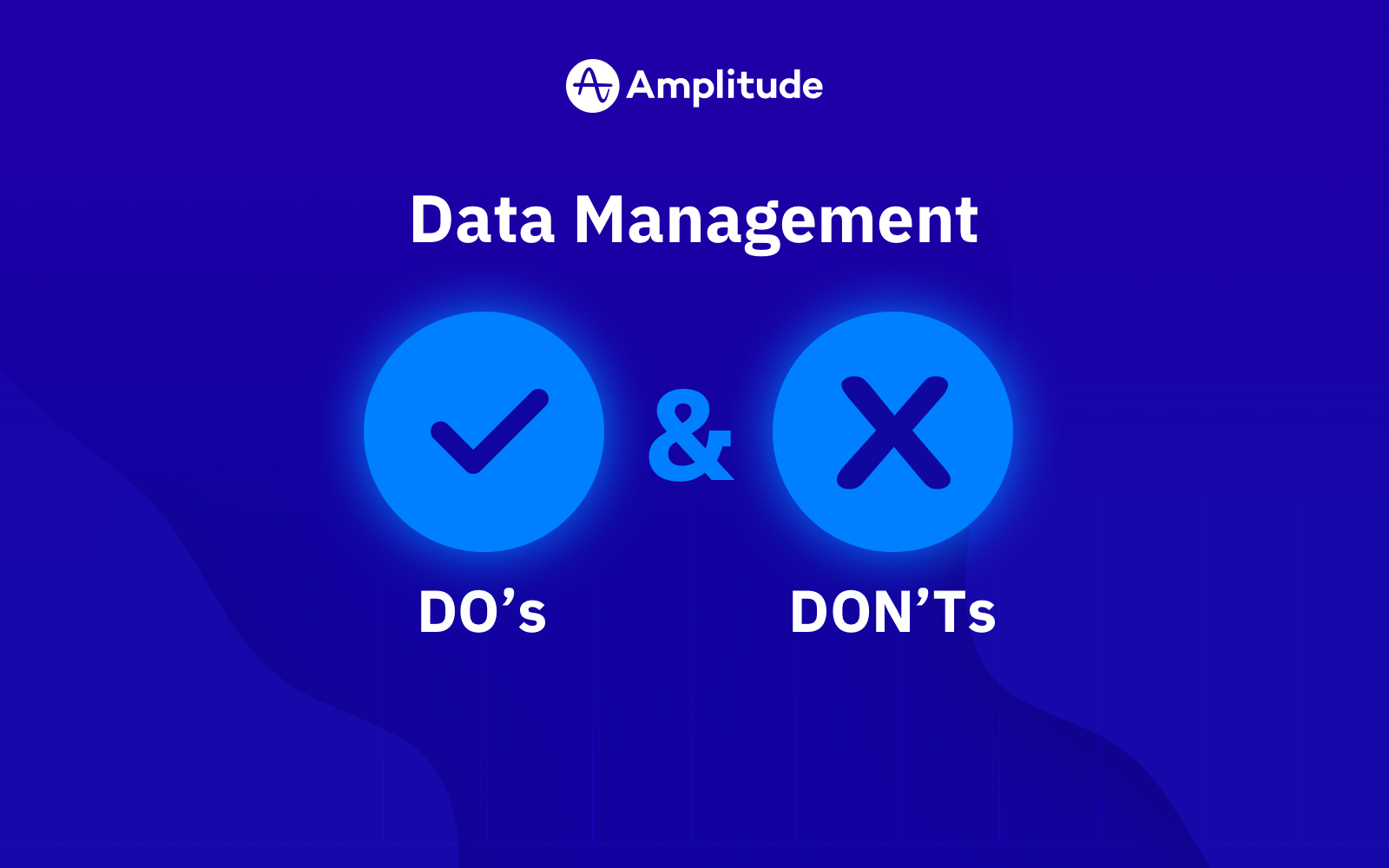Business decisions are rooted in data. If you’re deciding which customer segment to prioritize or which product feature to build next, running an analysis should be your first line of questioning. But if your team doesn’t follow strong data management practices—if your data is disorganized, inaccurate, or full of gaps—you can say goodbye to confidence in your business decisions.
company does with their data, from collection to use. It also includes data storage, data quality assurance, data analysis, and the communication of data.
In the world of , effective data management is critical. Your data gets sent to a tool, which your team uses to:
- Understand user behavior
- See a full view of the digital customer journey
- Find where customers get the most value from your product
- Measure the success of new features
- Identify customer groups that bring the most value to your business
- Explore user paths and unexpected behaviors
Your team won’t be able to surface these insights without effective data management. In other words, if you’re sending garbage into your analytics tool, you’ll get garbage out. Manage your data well, and your business can grow by leaps and bounds. Manage it poorly, and it could cost you .
The Don’ts of Data Management
Most of the “don’ts” of data management strategy begin with one core mistake—putting too much onus on the “data” component and not enough on “management.”
Simply having data in huge quantities is not enough. Effective data management allows companies to unlock the value of their data and keep their data strategy cost-efficient by collecting it in-line with well-defined KPIs that all of your company stakeholders understand the importance of.
To make that happen, you need to avoid three cardinal errors—data collection that’s not selective enough, poor data handling, and neglecting to secure your data.
Don’t: Try to Measure Everything
A data management plan that tries to track everything will become. It can be easy to forget that data doesn’t improve your company just by virtue of your company having it. Data needs to be collected, handled, and processed. It needs to be analyzed and checked for quality (and data quality assurance is a must). Most importantly, you need to with the departments in your company that need it to improve their operations.
This process can become an unmanageable mess if you’re taking in too much data.
To avoid over-collection, cultivate a good sense of which metrics are essential to your aims. Begin with a solid grasp of your —the KPI that best indicates your business’s likelihood of success.
This metric is usually based on a clear sign of customer success. For example, at Amplitude, customer success revolves around our users learning something from our product. Every time a user broadcasts their learning to the wider network, we consider that user as having learned. For that reason, our North Star metric is “.”
Once you have a good sense of your North Star metric based on your broader business objectives (e.g., a growth margin of x% by the end of this financial year), look to your stakeholders to help you define what data you need to collect.
Your stakeholders know what data is necessary to make process improvements and work towards your company’s goals. Do your sales and marketing teams need more information on prospects’ fields of employment to bring home leads and closed-won deals? Do your devs need to know more about which stages of the user journey drive up the bounce rate?
Based on your stakeholders’ feedback, you can build a data strategy and that results in highly usable data in manageable quantities. A tracking plan is a single document or spreadsheet spread across your entire organization, aimed at organizing data according to clearly defined KPIs and making that data legible and accessible.
Continue to refine your dataset as results come back to you. With too much data, your tracking plan will likely become unfeasible.
Don’t: Settle for Low-Quality Data
Low-quality data can come about for a variety of reasons, such as:
- Tracking everything instead of the things that matter
- Failing to invest in a data governor and plan
Importing disorganized or faulty data. Tools that enable straightforward and are worthy investments. The same goes for setting up clear policies on data ownership, and.
Don’t: Put Data Security on the Back Burner
Data is intangible. You’re unlikely to be aware of compromises to your data in the way you would be if, for instance, someone stole your car from your driveway. For that reason, it can be easy to presume that even minimal security spend is sufficient.
You take this risk, however, at your own peril. Data breaches cost companies an average of over per breach. You may find that the cost to your reputation following a data breach is even harder to pay.
No matter the size of your company, though, it’s critical that your team respects the security and privacy of customer data. One way to protect your data is to ensure that any vendors or partners you work with also adhere to high standards for data protection; seek out the tools that lead the industry in privacy and security. And, of course, be sure to implement standard security measures for everyday access to data, such as requiring employees to log into tools with an identity management system and two-factor authentication.
The Do’s of Data Management
If you’re sticking closely to our list of “don’ts,” the list of “do’s” in data management becomes relatively short. There are only two crucial “do’s.” First, you need to have a workflow for data management. Second, you have to your data.
Do: Identify a Data Management Workflow
Depending on your, you’ll need to follow one of three data management workflows:
- Data management beginners should focus on cleaning up data processes. Companies at this level likely haven’t spent any time defining data collection processes or identifying a data governor. At this point, they’re likely collecting data but need a cleanup workflow to organize it and put them on track to collecting useful data.
- Companies with intermediate data management experience should focus on defining clear data approval processes. Companies at this level might have set workflows for data collection, but no one oversees data approvals. This can lead to confusing naming conventions and orphaned data, which is data that is collected and then ignored.
- Data management experts should define event data workflows. Companies at this stage have made progress on stages one and two but still have work to do. Data management experts can now start planning ahead for their data needs and using dedicated governance tools like alongside a customer data platform (CDP) to help.
Regardless of where your company falls in the data management maturity model, you should be using a data management workflow. Workflows help you ensure that you’re collecting clean and accurate data that can be used by more than one team.
Do: Make Your Data Accessible for Your Employees
For teams across your company to make informed business decisions, multiple stakeholders need access to data. Sending that data to a product analytics tool—where anyone can perform an analysis—is one of the most effective ways to make that information accessible. After all, writing a SQL query shouldn’t be a requirement to explore your product’s data. Using product analytics tools is a much easier way to perform advanced analyses.
In addition to making sure teams have access to trustworthy data, there are other ways to encourage knowledge-sharing. For example, you can create Slack channels dedicated to posting insights. You can also create dashboards that keep track of custom company metrics and share them out at company-wide meetings.
If you’re using Amplitude as your product analytics tool, you can also leverage the feature to build and share custom analyses with your colleagues. This feature also allows users to add commentary to their analyses so that any viewer can gain the necessary context to understand which insight was derived.
Continue Your Learning
The point of excellent data management is to get the maximum amount of value possible out of the data you collect. Reaching the point where the data is clean, trustworthy, accessible, and usable for a variety of stakeholders can be a journey, though. To get started, continue your learning by reading these posts on data management and data governance:

